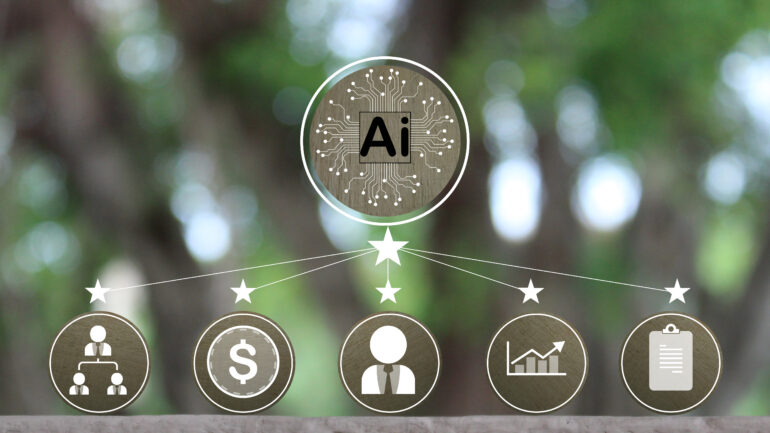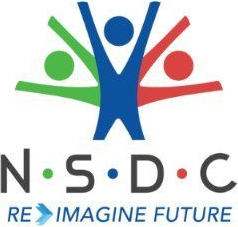AI and the Macroeconomy: The trillion-dollar question: Will AI really supercharge the economy?

AI is undoubtedly a game-changer, but its macroeconomic impact is likely to be evolutionary, not revolutionary. While certain industries will see clear efficiency gains, the broader economy may not experience the explosive growth some predict.
Last month the Microsoft CEO Satya Nadella, issued a strong caution about over expectations from Artificial Intelligence that was least expected given this company’s plan to spend more than $80 billion this fiscal year on data centres that were capable of handling AI workloads. Nadella emphasises measuring AI’s success through global GDP growth rather than arbitrary benchmarks like self-proclaimed AGI milestones.
He warned of parallels with the dot-com era’s infrastructure overbuilding, predicting AI compute costs will plummet as supply surges. “The real benchmark is the world growing at 10%,” he stated, dismissing industry claims of (Artificial General Intelligence) AGI breakthroughs as “nonsensical benchmark hacking. Tech giants Meta, Amazon, Alphabet, and Microsoft are set to spend a record $320 billion on AI and data centres in 2025, up from $230 billion in 2024. McKinsey estimates a $17–25 trillion boost to the global economy, while Goldman Sachs predicts a 7% rise in global GDP over the next decade.
But before we pop the champagne, a deeper economic analysis suggests that these claims might need a reality check. According to MIT economist Daron Acemoglu, AI’s macroeconomic impact, at least over the next ten years, is likely to be modest – adding no more than 0.71% to total factor productivity (TFP). And even that number might be an overestimate.
AI’s Economic Impact: A Reality Check
Most discussions on AI’s macroeconomic effects centre around productivity – how much more output we can squeeze from the same input. AI can boost productivity in two ways:
- Automation: AI takes over tasks humans used to do, cutting costs and speeding up work.
- Task Complementarity: AI helps workers become more productive by handling repetitive subtasks, allowing them to focus on higher-value work.
In theory, these should drive massive gains. But here’s the catch: AI is mostly automating easier tasks – things like customer support, coding subroutines, or basic data classification. Harder tasks, such as diagnosing rare diseases or managing complex business decisions, remain far from full automation.
Acemoglu’s analysis finds that only about 4.6% of all work tasks are realistically set to be impacted by AI in the next decade, and even within that subset, cost savings are modest – around 27% on labour costs. When you crunch these numbers using Hulten’s theorem (a fundamental principle of economic growth), the GDP boost from AI looks much smaller than the lofty predictions suggest.
Why AI’s Gains May Be Slower Than Expected
AI’s economic impact is constrained by two major factors:
1. Easy Tasks vs. Hard Tasks:
The biggest productivity gains seen so far are from easy-to-learn tasks, where success is easy to measure. AI can summarise text, recognise patterns, and generate code snippets with relative ease.
But what about hard-to-learn tasks? Think of a doctor diagnosing a rare disease, a judge ruling on a complex legal case, or a manager navigating a strategic business decision. These involve:
- Context-dependent decision-making.
- No clear-cut “right” answer.
- Lack of large, structured datasets for AI to learn from.
For these tasks, AI is much less effective. While it can assist, it doesn’t yet replace human expertise. This means that as AI expands into harder domains, productivity gains will slow down.
2. The Illusion of GDP Growth:
Many AI applications don’t necessarily create real economic value – they simply shift value around. For example:
- AI-generated social media content may boost advertising revenue, but does it actually create long-term economic growth?
- AI-driven automation might boost corporate profits, but will it raise wages or lead to better jobs?
Acemoglu warns that some new AI-driven tasks – like deepfakes, manipulative algorithms, and addictive social media – might have negative social value. In other words, they add to GDP, but not necessarily to overall human well-being.
What About Wages and Inequality?
Another major concern is how AI will affect wages and inequality. Optimists argue that AI could be different from previous automation waves because it seems to improve the productivity of lower-skill workers – for instance, by helping customer service agents or junior coders work faster.
But even this isn’t straightforward. Acemoglu’s analysis suggests that:
- AI might widen the income gap between labour and capital, just as past automation did.
- Wage gains from AI might be too small to significantly reduce inequality.
- Even when AI boosts low-skill workers, it could still increase inequality if it displaces mid-skill workers into lower-paying roles.
Simply put, AI could create a “productivity paradox” – making workers more efficient, but not necessarily wealthier.
The AI Future: Evolution, Not Revolution
The bottom line? AI is undoubtedly a game-changer, but its macroeconomic impact is likely to be evolutionary, not revolutionary. While certain industries – like software development, legal services, and customer support – will see clear efficiency gains, the broader economy may not experience the explosive growth some predict.
Instead of expecting AI to deliver instant economic transformation, policymakers and businesses should focus on:
- Encouraging AI to create new, high-value jobs rather than just automating old ones.
- Investing in human-AI collaboration to enhance productivity across all skill levels.
- Regulating AI’s negative externalities, ensuring that it adds real economic and social value.
As Acemoglu puts it, AI’s biggest impact may not come from how many tasks it automates but how many new, high-quality jobs it enables. The real challenge isn’t just making AI better – it’s ensuring AI makes us better.


